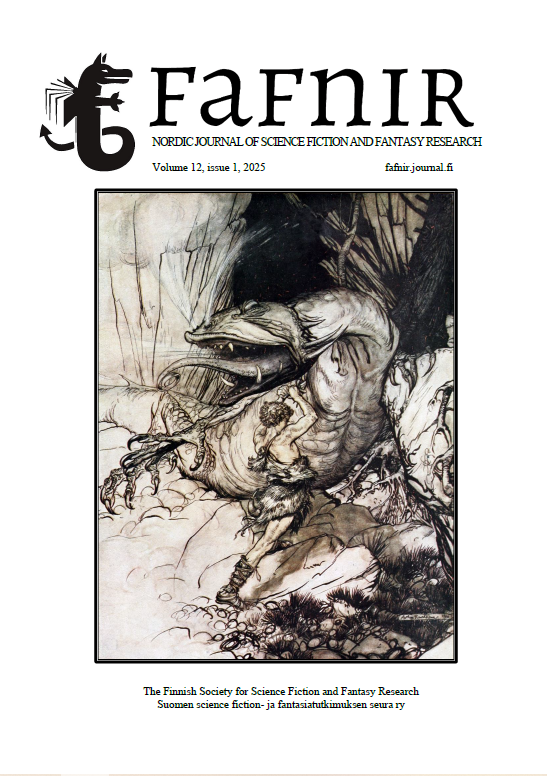Ecocritical Perspectives in Naomi Novik’s Uprooted
Keywords:
fantasy, ecocriticism, anthropocentrism, anthropomorphism, Naomi NovikAbstract
Eco-fantasy critics often celebrate what Gry Ulstein calls fantasy’s “intrinsic exploratory potential for ecocritical ideas.” It is, however, equally important to acknowledge the possibility of failure that a rhetoric of potentiality necessarily implies. As Ulstein admits, fantasy can reinscribe anthropocentric messaging just as easily as it presents ecological perspectives. Naomi Novik’s environmental fantasy novel Uprooted (2015) offers an example of a text that incorporates elements from both ends of fantasy’s spectrum of ecocritical potential. Specifically, it dramatizes a shift in perspective from an initially negative, human-centered depiction of nonhuman environments toward a vision in which humanity appears considerably less central or important. Capitalizing on fantasy’s capacity to focalize nonhuman points of view, Uprooted evokes philosopher Timothy Morton’s ecological concept of coexistentialism, a key principle of which maintains that within the course of negotiating relations between human and nonhuman beings, sometimes “the only thing to do is to treat beings as people, even if they turn out not to be.” Anthropomorphic gestures of this kind critically challenge assumptions of human exceptionalism and elevate the value of nonhuman life-forms, which in Novik’s novel includes the “heart trees” and magical creatures of the ever-expanding dark forest, whose reverse reclamation of human territories provides the principal antagonistic force of the narrative.
Downloads
Published
Issue
Section
License
Copyright (c) 2025 Peter Melville

This work is licensed under a Creative Commons Attribution-NonCommercial 3.0 Unported License.
Content in Fafnir is licensed under Creative Commons Attribution-Non Commercial 3.0 Unported License (CC BY-NC 3.0).
Beginning in November 2019, authors retain full copyright without restrictions. By publishing with Fafnir, authors grant a non-exclusive license to Fafnir to distribute the publisher’s version of the work, and give Fafnir permission to grant reprint and/or translation requests in accordance with our open-access policy and our Creative Commons license.
Prior to November 2019, copyright for all published material is held by Fafnir, but authors have full permission to use their work as they wish (i.e., self-archiving, reprint requests, using for other projects, etc.).
In both cases, re-use or re-posting of material published in Fafnir must acknowledge original publication and include a link to the publisher version.


